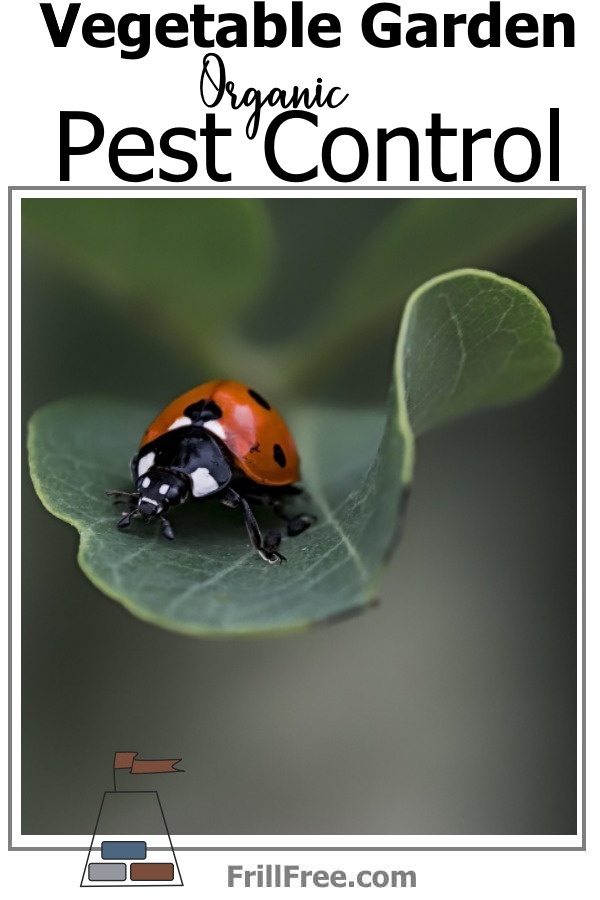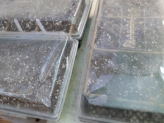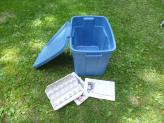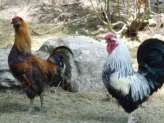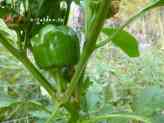- Homesteading
- Growing Vegetables
- Garden Bugs
- Vegetable Garden Organic Pest Control
Vegetable Garden Organic Pest Control
Use Mother Natures Methods
If your garden is organic, and you're growing your vegetables with no chemicals, don't add any with your pest control. Use mother natures ways of dealing with bugs that eat your plants.
Natural Prevention Methods
Companion Planting
- Plant marigolds, basil, and nasturtiums near vegetables to repel pests
- Use trap crops like radishes to lure pests away from main crops
- Interplant herbs like rosemary, thyme, and mint as natural deterrents
Find out more here; Companion Planting
Physical Barriers
- Row covers to protect young plants from flying insects
- Copper tape around raised beds to deter slugs and snails
- Mulching to prevent soil-dwelling pests and retain moisture
More here: Garden Pest Protection
Organic Spray Solutions
Soap Spray
- Mix 1-2 tablespoons mild liquid soap per quart of water
- Effective against aphids, spider mites, and soft-bodied insects
- Apply in early morning or evening to avoid leaf burn
Neem Oil
- Natural pesticide that disrupts insect life cycles
- Safe for beneficial insects when applied correctly
- Use according to package directions, typically every 7-14 days
Diatomaceous Earth (Food Grade)
- Sprinkle around plants to control crawling insects
- Works by damaging insect exoskeletons
- Reapply after rain or watering
Beneficial Insects
Attract Natural Predators
- Ladybugs for aphid control
- Lacewings for various soft-bodied pests
- Parasitic wasps for caterpillar control
- Plant flowers like yarrow, dill, and fennel to attract beneficials
Specific Pest Solutions
Aphids: Soap spray, ladybugs, or strong water spray
Caterpillars: Bt (Bacillus thuringiensis) spray, hand-picking - make sure to ID them first
Slugs/Snails: Beer traps, copper barriers, diatomaceous earth
Whiteflies: Yellow sticky traps, reflective mulch
Cutworms: Cardboard collars around seedlings
Cultural Practices
- Crop rotation to break pest cycles
- Regular garden cleanup to remove pest habitat
- Proper spacing for good air circulation
- Healthy soil management to strengthen plant resistance
Cultural Practices & Healthy Soil Management for Pest Control
Soil Health Fundamentals
The Soil-Plant-Pest Connection
Healthy soil creates strong plants that are naturally more resistant to pests and diseases. When plants receive proper nutrition and grow in well-structured soil, they develop stronger cell walls and better natural defense compounds.
Key Soil Health Indicators
- Organic matter content (aim for 3-5%)
- Proper pH levels (6.0-7.0 for most vegetables)
- Good drainage with moisture retention
- Active soil biology (earthworms, beneficial microbes)
- Balanced nutrient availability
Building Organic Matter
Composting
- Add 1-2 inches of finished compost annually
- Creates slow-release nutrients and improves soil structure
- Feeds beneficial soil organisms that compete with harmful ones
- Homemade compost from kitchen scraps and yard waste
Cover Crops/Green Manures
- Plant crimson clover, winter rye, or buckwheat in off-season
- Fixes nitrogen (legumes) and adds organic matter when tilled in
- Breaks pest cycles by eliminating host plants
- Suppresses weeds that harbor pests
Mulching
- Apply 2-4 inches of organic mulch (straw, leaves, grass clippings)
- Feeds soil organisms as it decomposes
- Maintains consistent soil moisture and temperature
- Creates habitat for beneficial ground beetles and spiders
Soil Biology Enhancement
Mycorrhizal Fungi
- Beneficial fungi that form partnerships with plant roots
- Improves nutrient uptake and disease resistance
- Can be purchased as inoculants for new gardens
- Maintained by avoiding excessive tilling and chemical inputs
Beneficial Bacteria
- Compost tea applications every 2-4 weeks during growing season
- Promotes healthy root zone microbiology
- Suppresses soil-borne diseases
- Simple recipe: steep compost in water for 24-48 hours, strain and apply
Crop Rotation Strategies
4-Year Rotation Plan
- Year 1: Brassicas (cabbage family)
- Year 2: Legumes (beans, peas)
- Year 3: Solanaceae (tomatoes, peppers, eggplant)
- Year 4: Root vegetables and cucurbits
Benefits for Pest Control
- Breaks life cycles of specialized pests
- Prevents soil nutrient depletion
- Reduces disease buildup in soil
- Maintains soil fertility naturally
Soil Testing and Amendment
Regular Testing
- Test pH and major nutrients every 2-3 years
- Adjust pH with lime (raise) or sulfur (lower)
- Add specific organic amendments based on deficiencies
Organic Amendments
- Bone meal for phosphorus
- Kelp meal for trace minerals and potassium
- Rock dust for slow-release minerals
- Worm castings for gentle, balanced nutrition
Water Management
Proper Irrigation
- Deep, infrequent watering encourages deep roots
- Drip irrigation or soaker hoses reduce leaf moisture
- Water early morning to allow leaves to dry
- Avoid overhead watering which spreads diseases
Drainage Improvement
- Add compost and coarse organic matter to heavy clay
- Create raised beds in poorly draining areas with thick walkways of wood chips
- Install French drains if necessary
- Avoid working wet soil to prevent compaction
Soil Structure Maintenance
Minimal Tillage
- Use broadfork instead of rototiller when possible
- Add organic matter to surface rather than mixing in
- Plant cover crops to naturally improve structure
- Create permanent pathways to avoid soil compaction
Bed Preparation
- Double-dig new beds once, then maintain with surface additions
- Create raised beds 3-4 feet wide for easy access
- Add 2-4 inches of compost annually
- Use cardboard sheet mulching to convert lawn areas
Timing and Seasonal Practices
Fall Soil Preparation
- Add compost and organic amendments
- Plant cover crops or apply thick mulch
- Clean up diseased plant material
- Test and adjust soil pH
Spring Soil Care
- Allow soil to dry before working
- Add fresh compost before planting
- Apply organic fertilizers 2-3 weeks before planting
- Refresh mulch around established plants
Monitoring Soil Health
Visual Indicators
- Dark, crumbly soil texture
- Earthworm activity
- Good water infiltration
- Healthy plant growth and color
Simple Tests For Soil
- Squeeze test for soil texture
- Percolation test for drainage
- Observe root development when harvesting
Healthy soil management is the foundation of successful organic gardening. When your soil ecosystem is thriving, your plants will be naturally more resistant to pests and diseases, reducing the need for interventions.
Pests have to be controlled, there are no two ways about that. If you want some vegetables to harvest, then take care of the bugs so they leave them alone. With resilient soil management and careful observation, you can keep the pests at bay.
